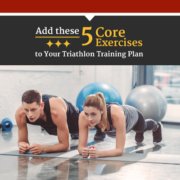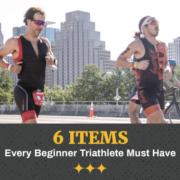How to Set Up Your Transition Area on Race Day
Enjoy a smooth race morning when you properly set up your transition area
Properly setting up your transition area can help reduce the amount of time it takes for you to finish. Preparing ahead of time to transition from swimming to cycling to running can help you keep your composure and focus on what’s next. Follow the seven tips below to set up your transition area in a way that’ll benefit you on race day! Pro tip: this advice is even more important for first-timers who want to know what to expect at their first triathlon.
Make transition area compact and comfortable
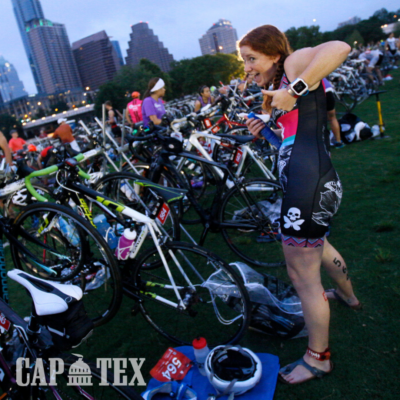
Be respectful of other triathletes and make your transition area compact and comfortable.
Be courteous to your triathlon neighbors! You don’t need to be crammed next to one another, but you also don’t get a 10-foot runway all to yourself. Make sure there’s a comfortable amount of space around you. Chat with the folks around you, make sure they have the space they need too. If you find out you both have different time goals and speeds, you might not even be in transition at the same time. Pro tip: remember where your transition area is by identifying your row or specific landmarks around it. If you have time, walk from all the different entrances and exits to your transition area to become more familiar.
Carry extra goggles
Nobody wants this to happen, but sometimes the rubber straps break when you least expect it. Being goggle-less is not a good start to race morning. Always keep an extra pair of goggles with your triathlon gear. Even if yours don’t break, it’s still a good idea to have an extra pair in case you can help someone you know who didn’t bring an extra pair.
Clip cycling shoes into your pedals
This tip is more for veterans, but there’s no reason you can’t do this! A great way to save time during the triathlon transition is to keep your cycling shoes clipped into your pedals. This maneuver takes a lot of practice. You must be comfortable slipping your feet in and bending over while riding to strap your shoes. If you do this, make sure the shoes are loose enough for your feet to slide in easily but not too loose that the straps come out.
Put bike in preferred gear
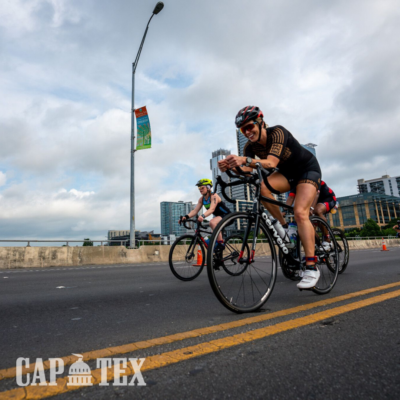
Ease into cycling when your bike is in the gear you want before racking it.
You’re in transition after the swim, switching out your gear. The last thing you want is to hop on your bike, leave your transition area, and start pedaling in the highest gear. Make sure your bike is in the gear that’ll allow for a smooth start to your ride. Adjust accordingly, depending on whether you’re starting uphill or downhill. Pro tip: make sure your saddle height is where it’s supposed to be before race morning.
Loosen your running shoes
Rack your bike and get ready for the last leg: the run. Make your running shoes are loose enough that you can easily slide in your feet. Unless you have amazing balance, it might be best to sit down and put them on. Especially if you have to tie your laces. But you can save even more time with elastic laces! Keep the resistance just right so the shoe is snug for running, but not so tight that you can’t get your foot in.
Practice your transition area before race day
This helps you nail down what works for you and what won’t work for you. Practice putting on shoes with elastic laces. Try leaving your shoes clipped into your pedals before you ride. Perfect the order in which you complete everything comfortably. The best time to do this is in the middle of a brick workout. These workouts most closely resemble race day and give you a good idea of how transition will unfold.
Simulate race morning
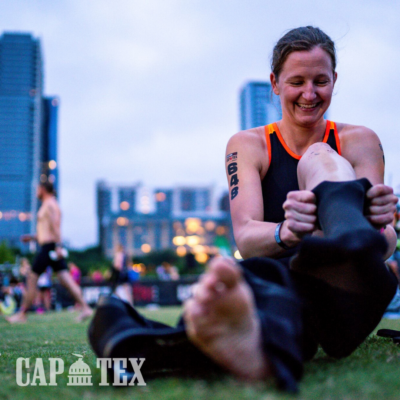
Complete a test run to ensure your transition area is perfectly set up.
Once your transition area is set up race morning, do a test run. You don’t have to physically put on and take off everything, but it helps to run through each transition. Make sure your shoes are loose. Check your bike’s gear. Place your nutrition and hydration where you can easily grab it. If you wear a hat and sunglasses on the run, put your shades in your hat so you don’t forget them. These are ways to reduce pre-race jitters. Here are six more tactics that can help with any butterflies!
This simple checklist will help you effectively set up your transition area on race day. It’ll allow for a more enjoyable race experience and possibly a faster time. Practice beforehand to make sure you’re comfortable with everything.


